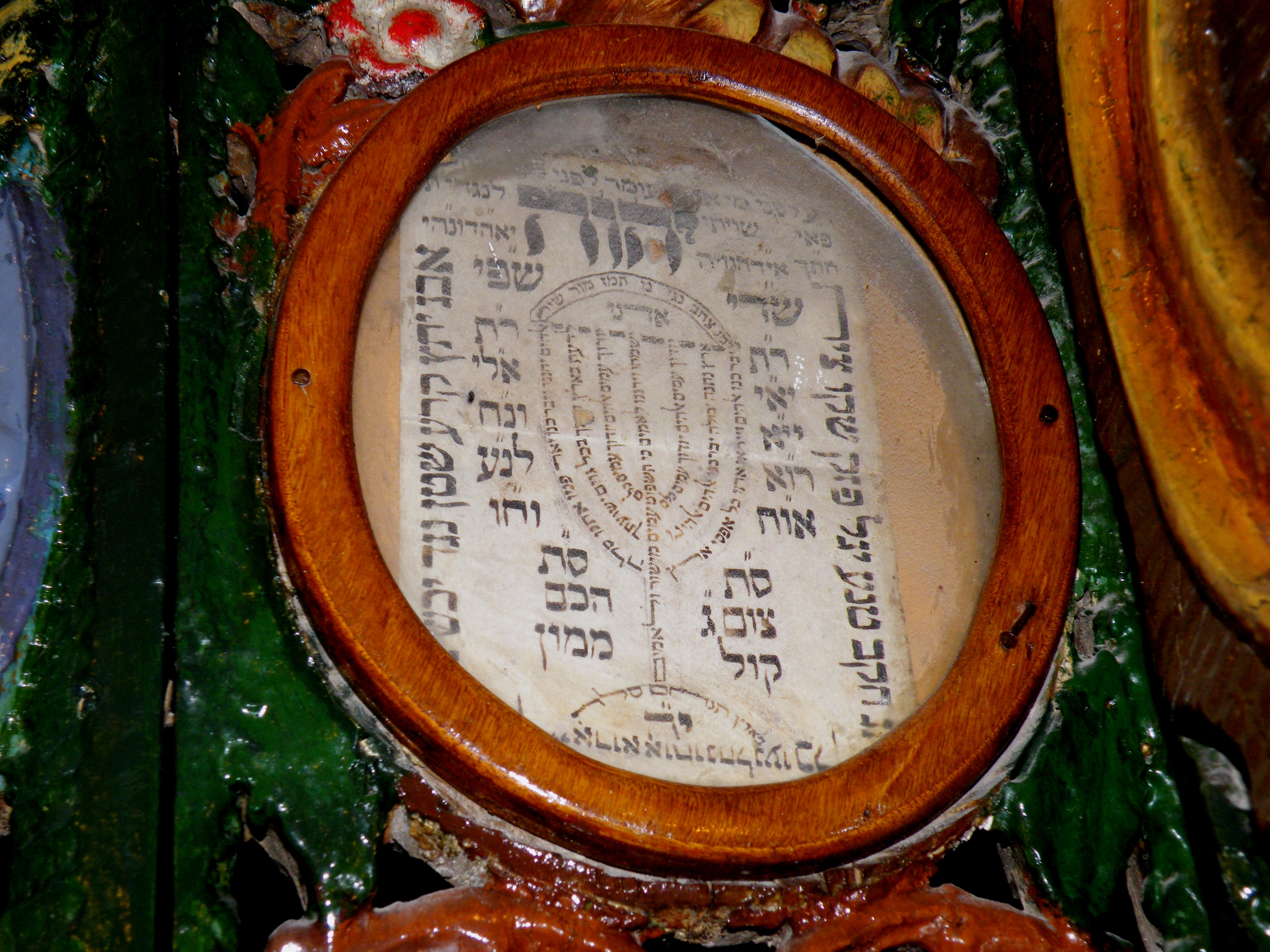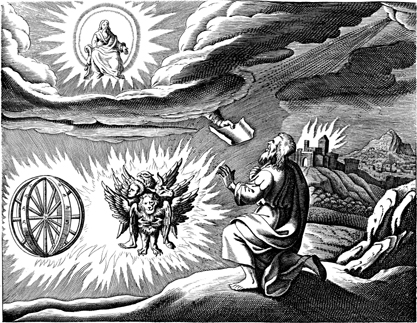|
Pardes (legend)
Pardes (Hebrew: ''pard─ōs'', "orchard") is the subject of a Jewish aggadah ("legend") about four rabbis of the Mishnaic period (1st century CE) who visited the '' pardes'' (the "orchard" of esoteric Torah knowledge), only one of whom succeeded in leaving the ''pardes'' unharmed. The basic story goes as follows: Four entered the ''pardes''ŌĆöBen Azzai, Ben Zoma, Ben Avuya (called ūÉūŚū© - acher, the another one - because of what happened to him after he entered the ''pardes'') and Rabbi Akiva. One looked and died; one looked and went mad; one looked and apostatized; and one entered in peace and departed in peace.Sources differ with regard to which sage died and which became demented; the Tosefta and Bavli say ben-Azai died and ben-Zoma became demented, but the Yerushalmi, Shir HaShirim Rabbah, and Hekhalot literature record the inverse. Etymology The Hebrew word ūżųĘų╝ū©ų░ūōųĄų╝ūĪ (''pardes'', "orchard") is of Persian origin (cf Avestan ɼ×ɼĆɼīɼŁÉ¼īŌĖ▒ɼøɼĆɼēɼ░É ... [...More Info...] [...Related Items...] OR: [Wikipedia] [Google] [Baidu] |
Hebrew Language
Hebrew (; ; ) is a Northwest Semitic language of the Afroasiatic language family. Historically, it is one of the spoken languages of the Israelites and their longest-surviving descendants, the Jews and Samaritans. It was largely preserved throughout history as the main liturgical language of Judaism (since the Second Temple period) and Samaritanism. Hebrew is the only Canaanite language still spoken today, and serves as the only truly successful example of a dead language that has been revived. It is also one of only two Northwest Semitic languages still in use, with the other being Aramaic. The earliest examples of written Paleo-Hebrew date back to the 10th century BCE. Nearly all of the Hebrew Bible is written in Biblical Hebrew, with much of its present form in the dialect that scholars believe flourished around the 6th century BCE, during the time of the Babylonian captivity. For this reason, Hebrew has been referred to by Jews as '' Lashon Hakodesh'' (, ) since an ... [...More Info...] [...Related Items...] OR: [Wikipedia] [Google] [Baidu] |
Hebrew Bible
The Hebrew Bible or Tanakh (;"Tanach" ''Random House Webster's Unabridged Dictionary''. Hebrew: ''T─ün─üßĖĄh''), also known in Hebrew as Miqra (; Hebrew: ''M─½qr─ü''), is the Biblical canon, canonical collection of Hebrew language, Hebrew scriptures, including the Torah, the Nevi'im, and the Ketuvim. Different branches of Judaism and Samaritanism have maintained different versions of the canon, including the 3rd-century Septuagint text used by Second-Temple Judaism, the Syriac language Peshitta, the Samaritan Torah, the Dead Sea Scrolls, and most recently the 10th century medieval Masoretic Text, Masoretic text created by the Masoretes currently used in modern Rabbinic Judaism. The terms "Hebrew Bible" or "Hebrew Canon" are frequently confused with the Masoretic text, however, this is a medieval version and one of several ... [...More Info...] [...Related Items...] OR: [Wikipedia] [Google] [Baidu] |
Jewish Meditation
Jewish meditation includes practices of settling the mind, introspection, visualization, emotional insight, contemplation of divine names, or concentration on philosophical, ethical or mystical ideas. Meditation may accompany unstructured, personal Jewish prayer, may be part of structured Jewish services, or may be separate from prayer practices. Jewish mystics have viewed meditation as leading to ''devekut'' (cleaving to God). Hebrew terms for meditation include ''hitbodedut'' (or ''hisbodedus,'' literally "self-seclusion") or ''hitbonenut/hisbonenus'' ("contemplation"). Through the centuries, meditation practices have been developed in many movements, including among Maimonideans (Moses Maimonides and Abraham Maimonides), Kabbalists (Abraham Abulafia, Isaac the Blind, Azriel of Gerona, Moses Cordovero, Yosef Karo and Isaac Luria), Hasidic rabbis (Baal Shem Tov, Schneur Zalman of Liadi and Nachman of Breslov), Musar movement rabbis (Israel Salanter and Simcha Zissel Ziv), Conse ... [...More Info...] [...Related Items...] OR: [Wikipedia] [Google] [Baidu] |
Tannaim
''Tannaim'' ( Amoraic Hebrew: ū¬ūĀūÉūÖūØ , singular , ''Tanna'' "repeaters", "teachers") were the rabbinic sages whose views are recorded in the Mishnah, from approximately 10ŌĆō220 CE. The period of the ''Tannaim'', also referred to as the Mishnaic period, lasted about 210 years. It came after the period of the ''Zugot'' ("pairs"), and was immediately followed by the period of the '' Amoraim'' ("interpreters"). The root ''tanna'' () is the Talmudic Aramaic equivalent for the Hebrew root ''shanah'' (), which also is the root-word of ''Mishnah''. The verb ''shanah'' () literally means "to repeat hat one was taught and is used to mean "to learn". The Mishnaic period is commonly divided up into five periods according to generations. There are approximately 120 known ''Tannaim''. The ''Tannaim'' lived in several areas of the Land of Israel. The spiritual center of Judaism at that time was Jerusalem, but after the destruction of the city and the Second Temple, Yohanan ben Zakkai an ... [...More Info...] [...Related Items...] OR: [Wikipedia] [Google] [Baidu] |
Rashi
Shlomo Yitzchaki ( he, ū©ūæūÖ ū®ū£ū×ūö ūÖū”ūŚū¦ūÖ; la, Salomon Isaacides; french: Salomon de Troyes, 22 February 1040 ŌĆō 13 July 1105), today generally known by the acronym Rashi (see below), was a medieval French rabbi and author of a comprehensive commentary on the Talmud and commentary on the Hebrew Bible (the ''Tanakh''). Acclaimed for his ability to present the basic meaning of the text in a concise and lucid fashion, Rashi appeals to learned scholars and beginning students, and his works remain a centerpiece of contemporary Jewish studies. His commentary on the Talmud, which covers nearly all of the Babylonian Talmud (a total of 30 out of 39 tractates, due to his death), has been included in every edition of the Talmud since its first printing by Daniel Bomberg in the 1520s. His commentaries on the TanakhŌĆöespecially his commentary on the Chumash (the "Five Books of Moses")ŌĆöserves as the basis of more than 300 "supercommentaries" which analyze Rashi's choice of langu ... [...More Info...] [...Related Items...] OR: [Wikipedia] [Google] [Baidu] |
Hagigah
Hagigah or Chagigah (Hebrew: ūŚūÆūÖūÆūö, lit. "Festival Offering") is one of the tractates comprising Moed, one of the six orders of the Mishnah, a collection of Jewish traditions included in the Talmud. It deals with the Three Pilgrimage Festivals (Passover, Shavuot, Sukkot) and the pilgrimage offering that men were supposed to bring in Jerusalem. At the middle of the second chapter, the text discusses topics of ritual purity. The tractate contains three chapters, spanning 27 pages in the Vilna edition of the Babylonian Talmud, making it relatively short. The second chapter contains much estoric aggadah, describing creation, and the Merkavah. Its content is relatively light and uncomplicated, except for the third chapter. References External links English translation External links [...More Info...] [...Related Items...] OR: [Wikipedia] [Google] [Baidu] |
Talmud
The Talmud (; he, , Talm┼½ßĖÅ) is the central text of Rabbinic Judaism and the primary source of Jewish religious law (''halakha'') and Jewish theology. Until the advent of modernity, in nearly all Jewish communities, the Talmud was the centerpiece of Jewish cultural life and was foundational to "all Jewish thought and aspirations", serving also as "the guide for the daily life" of Jews. The term ''Talmud'' normally refers to the collection of writings named specifically the Babylonian Talmud (), although there is also an earlier collection known as the Jerusalem Talmud (). It may also traditionally be called (), a Hebrew abbreviation of , or the "six orders" of the Mishnah. The Talmud has two components: the Mishnah (, 200 CE), a written compendium of the Oral Torah; and the Gemara (, 500 CE), an elucidation of the Mishnah and related Tannaitic writings that often ventures onto other subjects and expounds broadly on the Hebrew Bible. The term "Talmud" may refer to eith ... [...More Info...] [...Related Items...] OR: [Wikipedia] [Google] [Baidu] |
Merkabah Mysticism
Merkabah ( he, ū×ųČū©ų░ūøųĖų╝ūæųĖūö ''merk─üv─ü'', "chariot") or Merkavah mysticism (lit. Chariot mysticism) is a school of early Jewish mysticism, c. 100 BCE ŌĆō 1000 CE, centered on visions such as those found in the Book of Ezekiel chapter 1, or in the hekhalot literature ("palaces" literature), concerning stories of ascents to the heavenly palaces and the Throne of God. The main corpus of the merkabah literature was composed in the period 200ŌĆō700 CE, although later references to the Chariot tradition can also be found in the literature of the Chassidei Ashkenaz in the Middle Ages. A┬Āmajor text in this tradition is the ''Maaseh Merkabah'' ( Hebrew: ū×ųĘūóų▓ū®ųĄūéūö ū×ųČū©ų░ūøųĖų╝ūæųĖūö ''ma╩┐─ā┼ø─ō merk─üv─ü'', "Work of the Chariot"). Etymology The noun ''merkabah/merkavah'' "thing to ride in, cart" is derived from the consonantal root ' with the general meaning "to ride". The word "chariot" is found 44 times in the Masoretic Text of the Hebrew BibleŌĆömost of them refe ... [...More Info...] [...Related Items...] OR: [Wikipedia] [Google] [Baidu] |
Babylonian Talmud
The Talmud (; he, , Talm┼½ßĖÅ) is the central text of Rabbinic Judaism and the primary source of Jewish religious law (''halakha'') and Jewish theology. Until the advent of modernity, in nearly all Jewish communities, the Talmud was the centerpiece of Jewish cultural life and was foundational to "all Jewish thought and aspirations", serving also as "the guide for the daily life" of Jews. The term ''Talmud'' normally refers to the collection of writings named specifically the Babylonian Talmud (), although there is also an earlier collection known as the Jerusalem Talmud (). It may also traditionally be called (), a Hebrew abbreviation of , or the "six orders" of the Mishnah. The Talmud has two components: the Mishnah (, 200 CE), a written compendium of the Oral Torah; and the Gemara (, 500 CE), an elucidation of the Mishnah and related Tannaitic writings that often ventures onto other subjects and expounds broadly on the Hebrew Bible. The term "Talmud" may refer to eith ... [...More Info...] [...Related Items...] OR: [Wikipedia] [Google] [Baidu] |
Tosefta
The Tosefta (Jewish Babylonian Aramaic: ū¬ūĢūĪūżū¬ūÉ "supplement, addition") is a compilation of the Jewish oral law from the late 2nd century, the period of the Mishnah. Overview In many ways, the Tosefta acts as a supplement to the Mishnah (''tosefta'' means "supplement, addition"). The Mishnah ( he, ū×ū®ūĀūö) is the basic compilation of the Oral law of Judaism; according to the tradition, it was compiled in 189 CE. The Tosefta closely corresponds to the Mishnah, with the same divisions for ''sedarim'' ("orders") and ''masekhtot'' ("tractates"). It is mainly written in Mishnaic Hebrew, with some Aramaic. At times the text of the Tosefta agrees nearly verbatim with the Mishnah. At others there are significant differences. The Tosefta often attributes laws that are anonymous in the Mishnah to named Tannaim. It also augments the Mishnah with additional glosses and discussions. It offers additional aggadic and midrashic material, and it sometimes contradicts the Mishnah in the ru ... [...More Info...] [...Related Items...] OR: [Wikipedia] [Google] [Baidu] |
Garden Of Eden
In Abrahamic religions, the Garden of Eden ( he, ūÆųĘų╝ū¤ųŠūóųĄūōųČū¤, ) or Garden of God (, and ūÆųĘū¤ųŠūÉų▒ū£ų╣ūöų┤ūÖūØ ''gan-Elohim''), also called the Terrestrial Paradise, is the Bible, biblical paradise described in Book of Genesis, Genesis 2-3 and Book of Ezekiel, Ezekiel 28 and 31. The location of Eden is described in the Book of Genesis as the source of four tributaries. Various suggestions have been made for its location: at the head of the Persian Gulf, in southern Mesopotamia (now Iraq) where the Tigris and Euphrates rivers run into the sea; and in Armenia. Like the Genesis flood narrative, the Genesis creation narrative and the account of the Tower of Babel, the story of Eden echoes the Ancient Mesopotamian religion, Mesopotamian myth of a king, as a primordial man, who is placed in a divine garden to guard the tree of life. The Hebrew Bible depicts Adam and Eve as walking around the Garden of Eden naked due to their sinlessness. Mentions of Eden are also made in ... [...More Info...] [...Related Items...] OR: [Wikipedia] [Google] [Baidu] |


.jpg)



